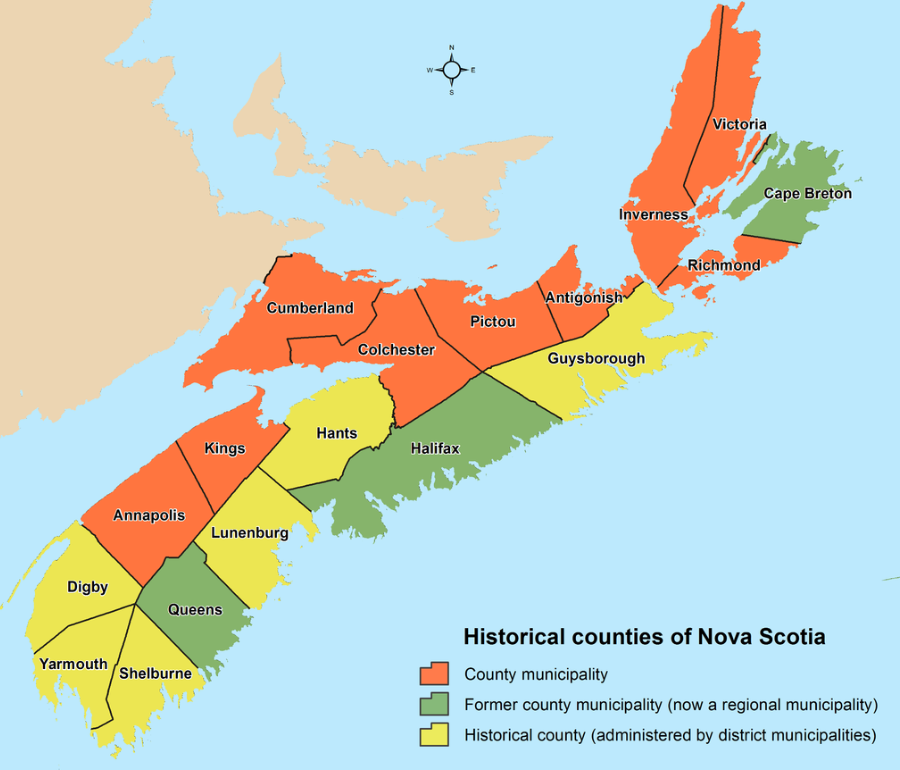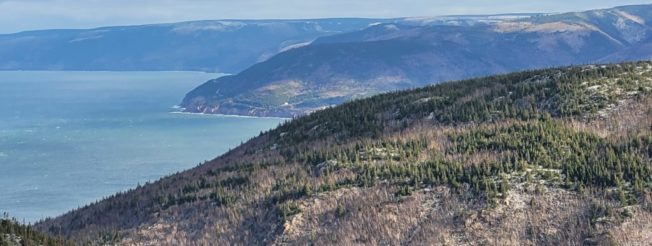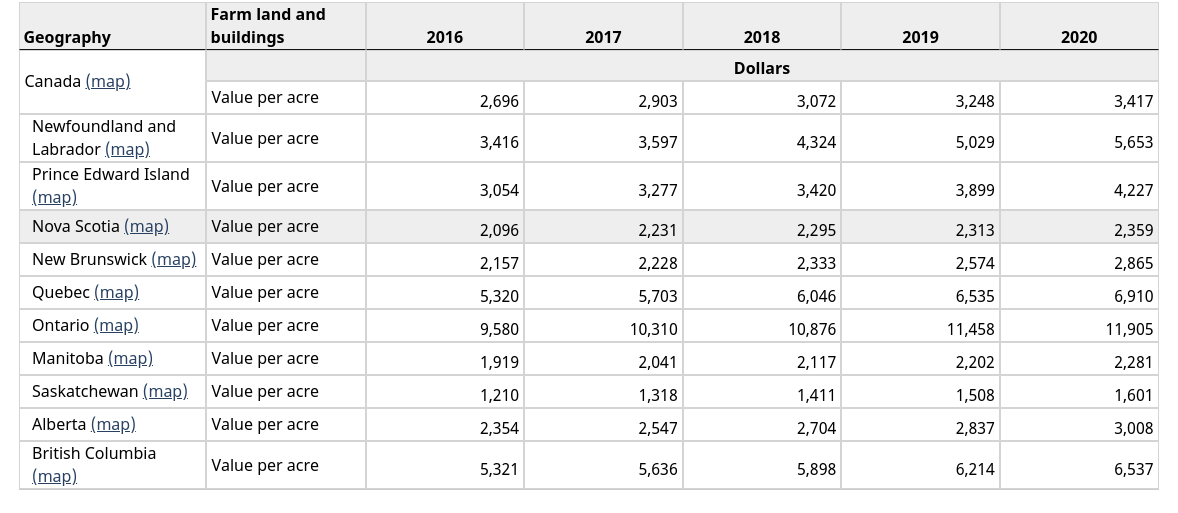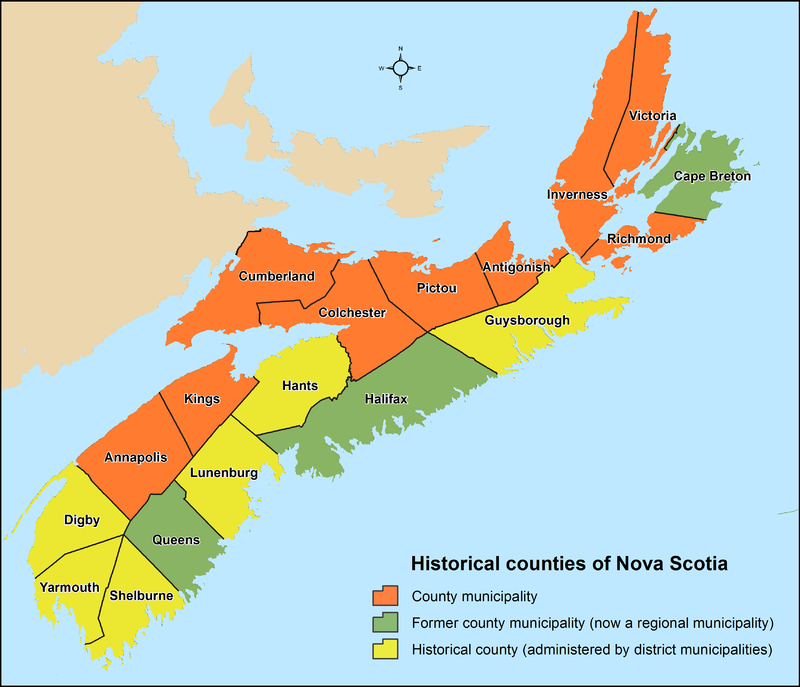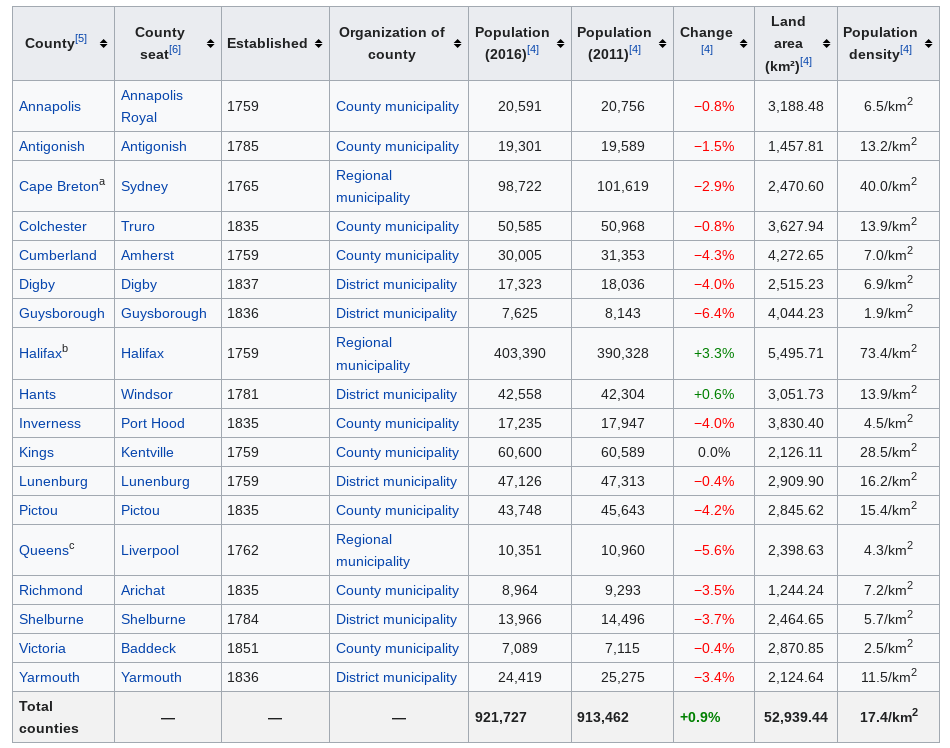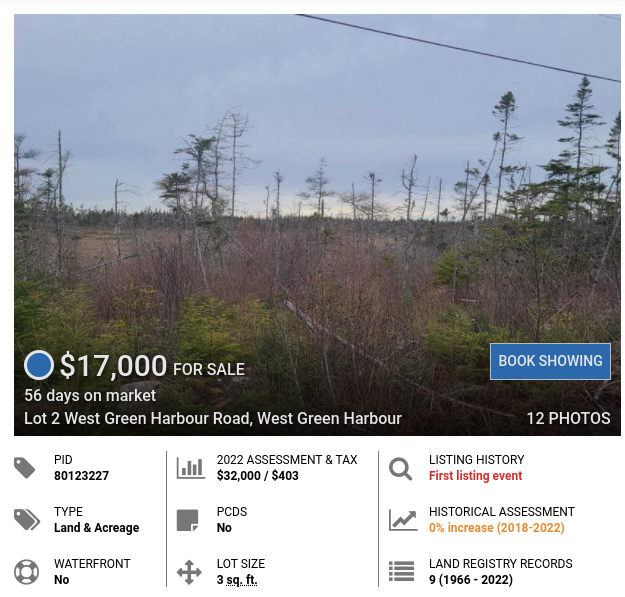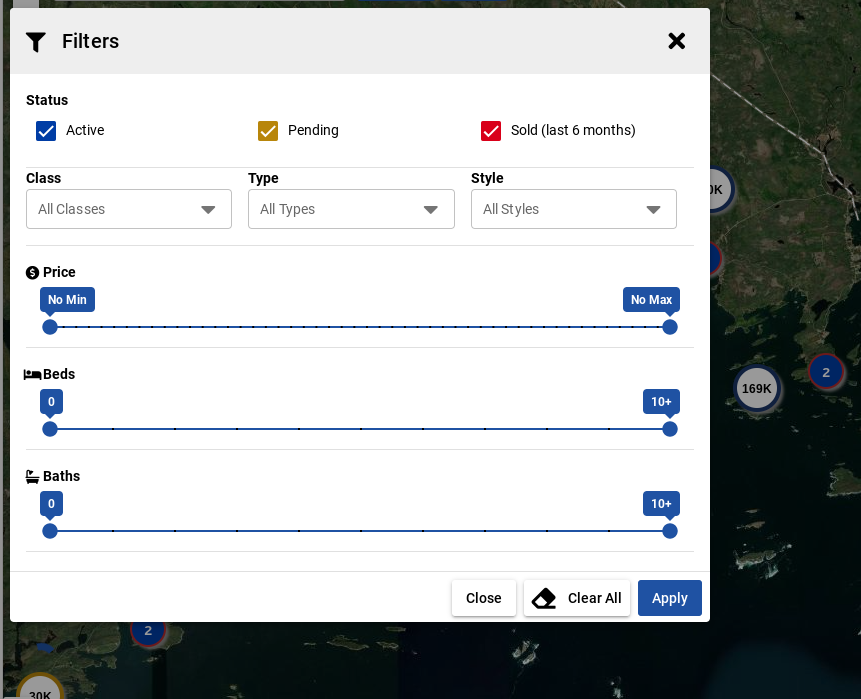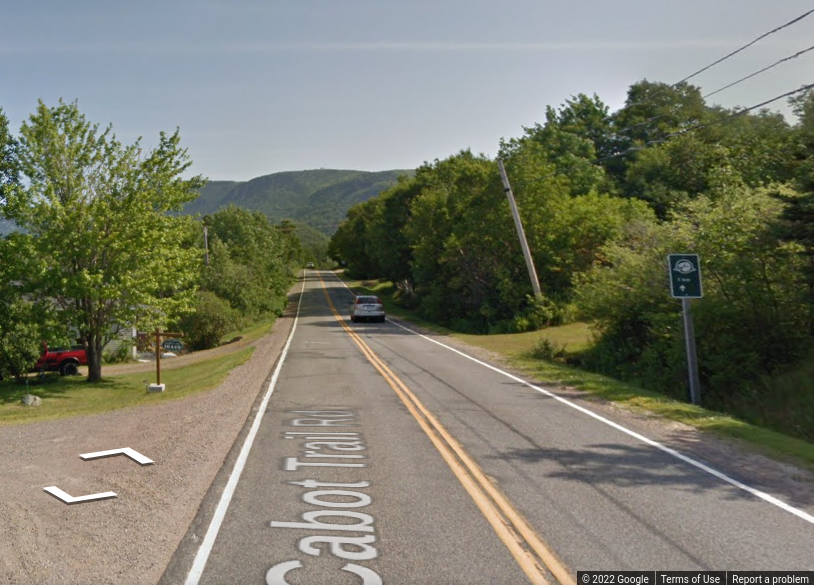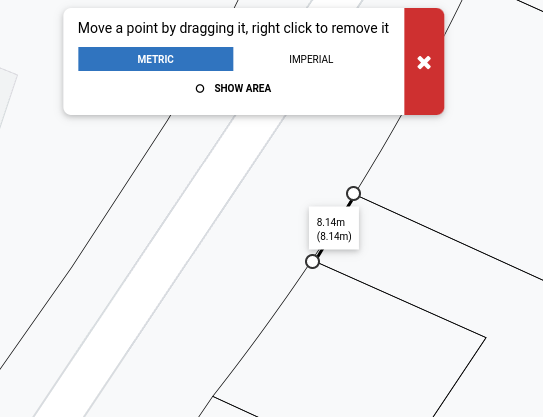Nova Scotia Zoning Maps
One of the challenges of buying land in Nova Scotia is determining what the potential uses of that land may be. Each municipality maintains their own zoning maps and land use bylaws. Nova Scotia zoning codes, bylaws and maps are useful to pinpoint a particular plot of land and determine its what type of zone it is in. With that established, the land use bylaw contains the details on the permitted and restricted uses (e.g. agriculture, commercial, residential, etc.) of each particular zone. Sounds like fun, right?
Well, here’s some good news. In this post, we’ve created the first all-in-one reference for Nova Scotia zoning maps and land use bylaws. We THINK we’ve found them all, but if something is missing or inaccurate please let us know. Of course, zoning is important to consider when buying land, but so are 1,000 other things. Be sure to check out our guide to buying land in Nova Scotia.
So, without further ado, here is our list of Nova Scotia zoning maps, updated for 2024:
Cape Breton Zoning Map – CBRM zoning map
Cape Breton Land Zoning Map – CBRM zoning map: https://www.arcgis.com/home/item.html?id=34b5e62a2a7f4904bde0b56a9e27df05
Cape Breton Land Use Bylaw – CBRM land use bylaw: https://www.cbrm.ns.ca/municipal-planning.html
Halifax Zoning Map – HRM zoning map
Halifax Land Zoning Maps – HRM zoning map: https://www.halifax.ca/about-halifax/regional-community-planning/community-plan-areas/halifax-plan-area
Halifax Land Use Bylaws: There are 22 different land use bylaws for Halifax Regional Municipality. You can find them all here.
Queens County Zoning Map – Queens NS zoning map
Region of Queens Municipality land zoning maps and land use bylaws: https://www.regionofqueens.com/municipal-services/planning/land-use-planning
East Hants Zoning Map – East Hants ns zoning map
East Hants land zoning map: https://www.easthants.ca/government/municipal-departments/planning-development/interactive-east-hants/
East Hants land use Bylaw: https://www.easthants.ca/wp-content/uploads/easthants-occ/agendas/40094/attachments/23201/PAC_Plan%20Update_LUB_March2023.pdf
West Hants Zoning Map – West Hants ns zoning map
West Hants land zoning map: https://www.westhants.ca/planning/planning-documents/3122-mps-map-1-generalized-future-land-use-map/file.html See additional documents here: https://www.westhants.ca/planning-documents.html
West Hants land use Bylaw: https://www.westhants.ca/planning-documents.html
Annapolis County Zoning Map – Annapolis zoning map
Annapolis County land zoning map: https://annapoliscounty.ca/Documents/1EzFolderList/CommunityDev/MunicipalPlanningStrategyLandUseBy-law/AnnapolisCounty/Future%20Land%20Use%20Map.jpg
Annapolis County land use bylaw: https://annapoliscounty.ca/community-development/zoning-development-control/291-municipal-planning-strategies-land-use-bylaws
Antigonish County Zoning Map – Antigonish ns zoning map
Town of Antigonish land use zoning map: https://www.townofantigonish.ca/news/757-toa-zoning-map/file.html
Town of Antigonish land use bylaw: https://www.townofantigonish.ca/departments/planning-building-services/834-town-of-antigonish-lub-final/file.html
Antigonish County land use zoning maps: https://edpc.ca/plan-documents-and-maps/
Antigonish County land use bylaws: https://edpc.ca/plan-documents-and-maps/
Colchester County Zoning Map – Colchester NS zoning map
Colchester County land zoning map: https://www.arcgis.com/apps/dashboards/510215b0a4384cbfaf901dac8b25347a
Colchester County land use bylaw: https://colchester.ca/3494-central-colchester-land-use-by-law-chapter-40/file
Cumberland County Zoning Map – Cumberland NS zoning map
Cumberland County land zoning map: https://www.plancumberland.ca/zoning-map
Cumberland County land use bylaw: https://www.plancumberland.ca/documents
Inverness Zoning Map – Inverness NS zoning map
Inverness County land zoning maps: https://edpc.ca/plan-documents-and-maps/
Inverness County land use bylaw: https://edpc.ca/plan-documents-and-maps/
Kings County Zoning Map – Kings County ns zoning map
County of Kings land zoning map: https://www.countyofkings.ca/residents/services/planning/Land-Use-Bylaw
County of Kings land use bylaw: https://www.countyofkings.ca/residents/services/planning/Land-Use-Bylaw
Pictou County Zoning Map – Pictou ns zoning map
Town of Pictou land zoning map: https://www.townofpictou.ca/planning-by-laws-and-documents
Town of Pictou land use bylaw: https://www.townofpictou.ca/planning-by-laws-and-documents
Pictou County land use bylaw: I would expect to find zoning maps and land use bylaws on the municipality website, but I’m having no luck locating them. If someone finds it, please send me a link.
Richmond County Zoning Map – Richmond ns zoning map
Richmond County land zoning maps: https://edpc.ca/plan-documents-and-maps/
Richmond County land use bylaw: https://edpc.ca/plan-documents-and-maps/
Victoria County Zoning Map – Victoria ns zoning map
Victoria County land zoning maps: https://edpc.ca/plan-documents-and-maps/
Victoria County land use bylaw: https://edpc.ca/plan-documents-and-maps/
Yarmouth Zoning Map – Yarmouth NS zoning map
Yarmouth municipality land use bylaw and zoning maps: https://www.district.yarmouth.ns.ca/index.php/municipal-operations/development-inspection/land-development-zoning
Zoning map and land use bylaw for the town of Yarmouth: https://www.townofyarmouth.ca/departments/planning-development/planning.html
Shelburne County Zoning Map – Shelburne NS zoning map
Shelburne County land zoning map (see page 27) and land use bylaw: https://www.municipalityofshelburne.ca/land-development-zoning/
Lunenburg Zoning Map – Lunenburg ns zoning map
Lunenburg County land zoning map: https://www.modl.ca/zoningmap.html
Lunenburg County land use bylaw: https://www.modl.ca/zoning.html
Digby County Zoning Map – Digby ns zoning map
Digby County zoning map (see page 13) and land use bylaw: https://digbymun.ca/3026-land-use-by-law/file.html
Town of Digby zoning map: https://www.digby.ca/planning-and-development/71-town-of-digby-zoning-map/file.html
Guysborough County Zoning Map – Guysborough ns zoning map
District of Guysborough land zoning map: https://modg.ca/sites/default/files/pdfs/Existing%20Land%20Use%20By-law%20Zoning%20Map.pdf
District of Guysborough land use bylaw: https://modg.ca/sites/default/files/pdfs/DRAFT%20New%20Land%20Use%20By-law.pdf
In Conclusion…
We hope you found the Nova Scotia zoning code you were looking for. We’re continuing to create resources to help people with buying land in Nova Scotia. That includes publishing Nova Scotia vacant land statistics, legislative updates for foreign buyers of vacant land, using GIS maps to navigate in Nova Scotia, good (and bad) questions to ask when buying land, and of course, land for sale in Nova Scotia. Are we missing something? Let us know!


